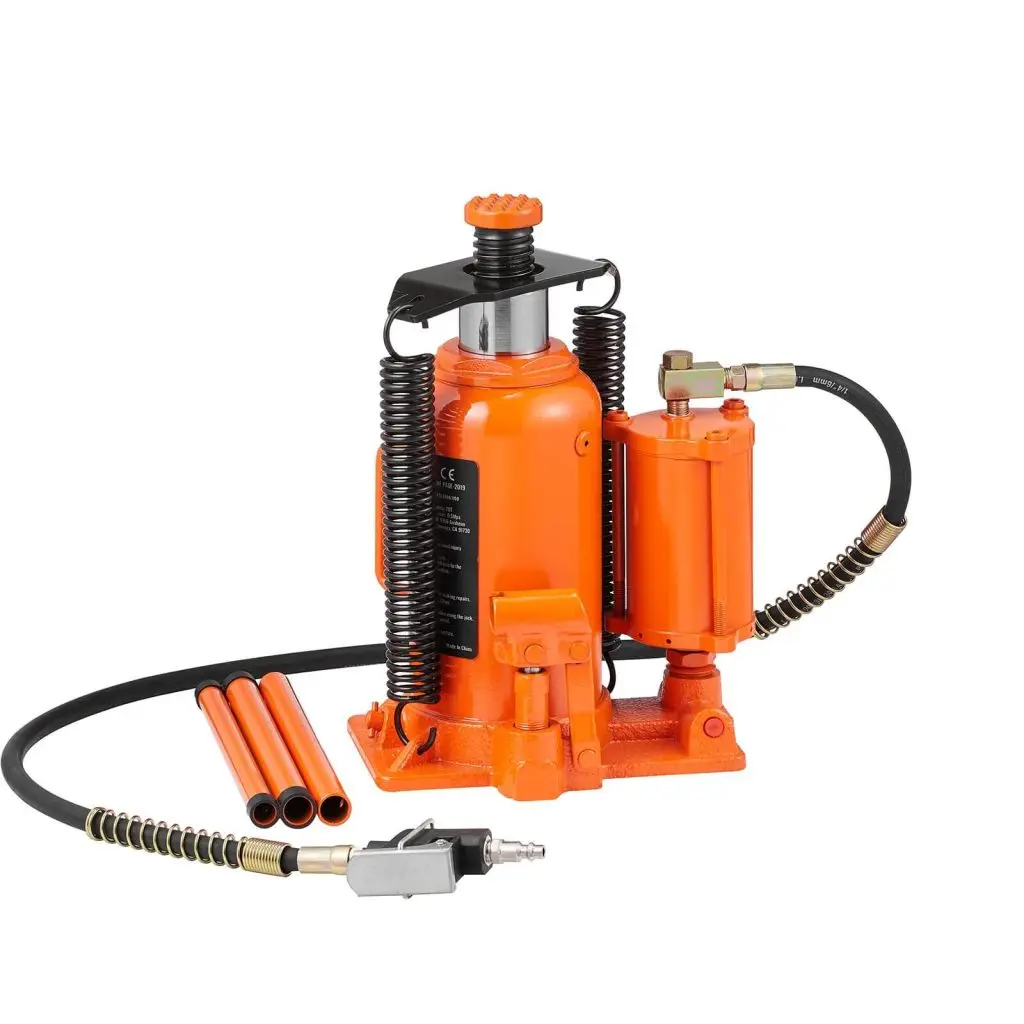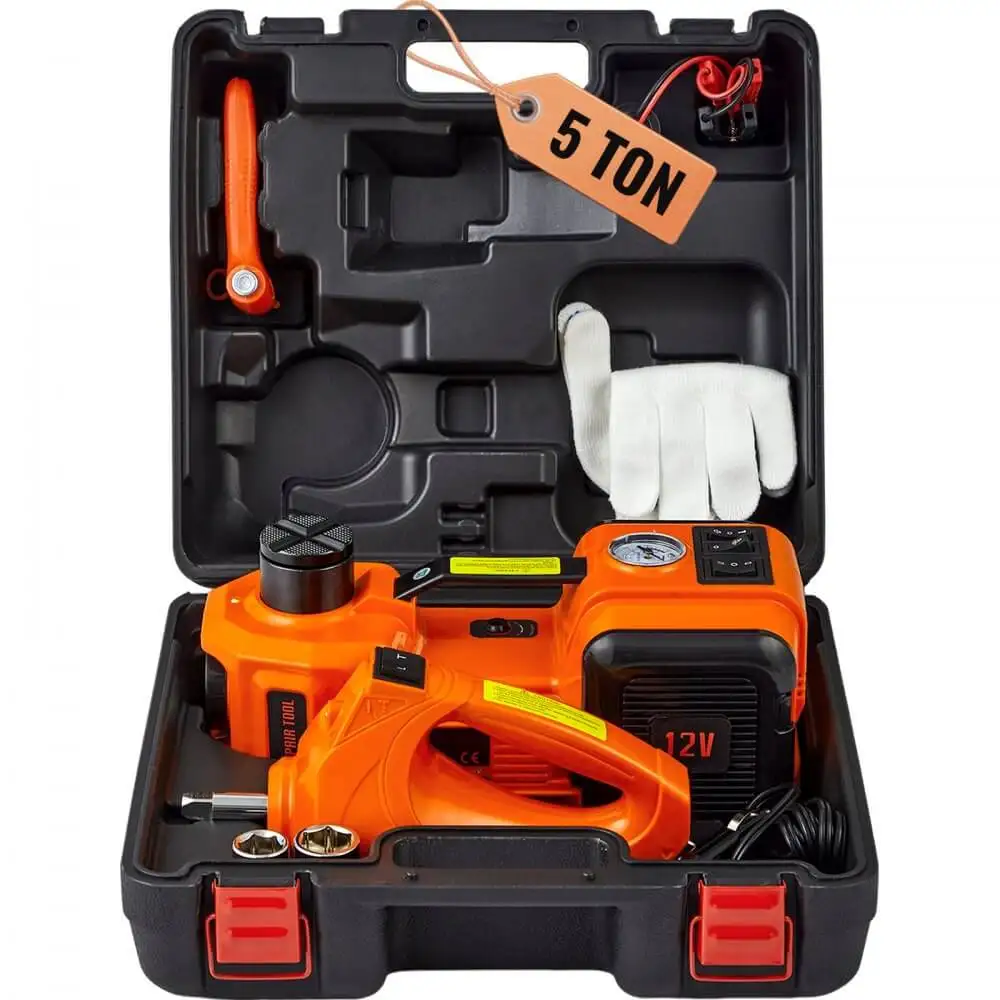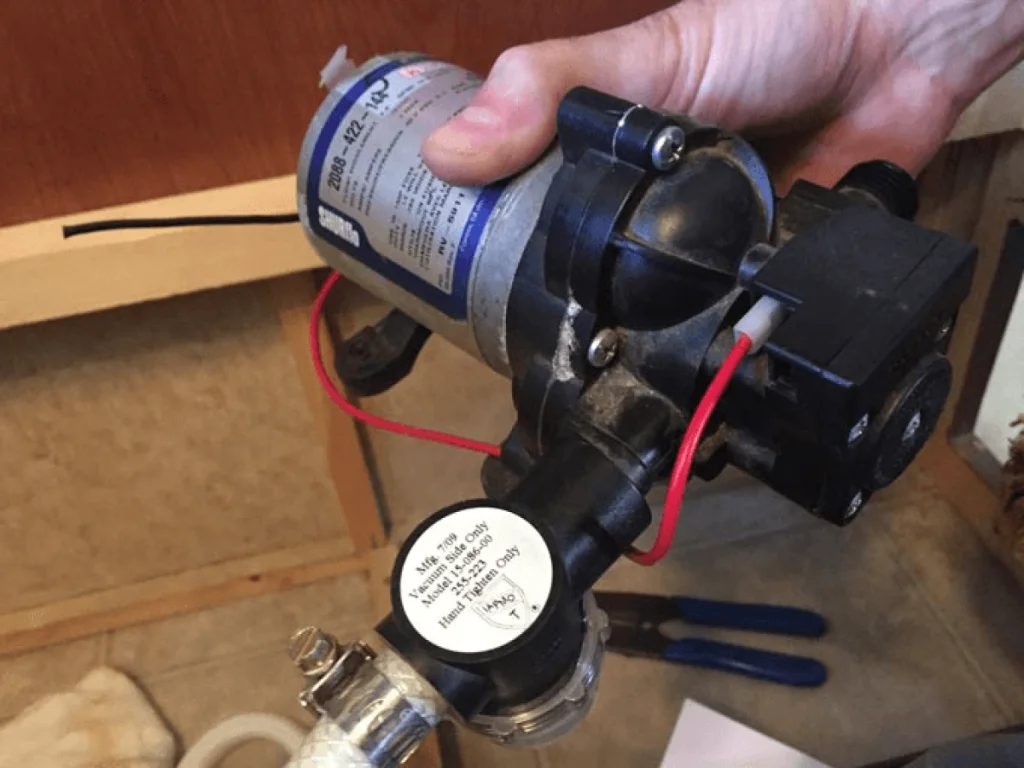If you own a hydraulic jack, you must understand how important it is to keep it well-maintained by properly oiling it. This simple action ensures the reliability and safety of the tool. Lifting automobiles couldn’t be possible without hydraulic jacks, but much like any other tool, they need routine maintenance to keep working properly.
To keep your hydraulic jack in perfect working condition, check the oil level and endeavor to add more oil when necessary. This will keep your jack running smoothly and efficiently. Apart from sticking to the prescribed maintenance routine, it is also important to invest in a hydraulic jack with a reputation for quality, reliability, as well as great ease of use and maintenance. In this regard, we recommend that you invest in the VEVOR car jack, as it comes highly recommended for diverse lifting needs.
Regardless of the manufacturer you buy from, your hydraulic jack will only deliver optimal performance and carry out your lifting tasks safely when you stick to the proper maintenance routine. Here, we share tips on how to fill your hydraulic jack, offering practical and actionable tips.
Table of contents
- Why Regular Maintenance of Your Hydraulic Jack is Essential
- Identifying When Your Hydraulic Jack Needs a Refill
- Selecting the Right Oil for Your Hydraulic Jack
- Step-by-Step Guide: How to Fill a Hydraulic Jack
- Bleeding Air from Your Hydraulic Jack: Why and How
- Maintaining Your Hydraulic Jack: Additional Tips
- VEVOR Car Jack Review: Why It Stands Out
- FAQs about How To Refill a Hydraulic Jack
Why Regular Maintenance of Your Hydraulic Jack is Essential
Regular maintenance is essential to keep your hydraulic jack working efficiently and to ensure its durability. The oil in the jack contributes a great deal to its ability to effortlessly lift huge loads. The jack won’t get the job done if the oil is dirty or the level is too low. In a situation like this, the lifting may be inconsistent or completely nonexistent.
Keeping an eye on the oil level and adding more as needed will prevent lifting problems or keep them at bay. The proper oiling procedure can also prevent breakdowns and keep your jack in top working condition. Always keep in mind that a jack that is well-cared for will serve you a long time.
Identifying When Your Hydraulic Jack Needs a Refill
Sometimes, many users may not be aware of when their hydraulic jack needs an oil refill. So, how do you know when your jack needs a refill? A quick rundown of the obvious symptoms that shows your jack needs an oil refill are shared below.
- Slow Lifting: If your jack is unusually difficult to raise, it could be an indication that the oil level is low.
- Uneven lifting: If you notice any swaying or instability when you lift, it’s a red flag that the oil level needs to be checked.
- Visible Leaks: Are there any oil stains beneath the jack? It’s quite evident that hydraulic fluid is being lost.
- Air bubbles: If you see little air bubbles floating around in the reservoir, it means air has gotten into the system, which occurs when the oil level is low.
- Noisy work: A well-oiled jack will not make a rattling noise. If you hear strange noises, it may be time to change the oil.
Selecting the Right Oil for Your Hydraulic Jack
Using the correct hydraulic oil in your jack is like putting premium gas in a high-performance vehicle; it keeps the tool running smoothly and efficiently. This section provides information on selecting the perfect oil for your hydraulic jack.
For starters, viscosity is essential. Viscosity refers to the thickness of the oil and its flow characteristics at various temperatures. You need a type of oil that is neither too thick nor too thin; it must be perfect. No matter how hot or cold your workplace becomes, the perfect viscosity will keep your jack lifting smoothly.
Another factor to consider is thermal stability. The oil’s resistance to temperature variations is a major consideration. If you use high-quality oil, your jack’s performance will remain constant because it does not break down when heated.
Also, non-corrosive properties are an important consideration. Avoid having oil eat away at your jack’s internals; that’s the last thing you need. You can extend the life of your jack and make it more reliable by protecting its internal workings by using an oil that is not corrosive.
If you have decided to invest in a VEVOR jack based on our earlier recommendation, you must endeavor to use only the recommended oils in filling and refilling it. Please go for high-quality hydraulic fluid (available separately) as stipulated by the manufacturer. Investing in high-quality hydraulic fluids is ideal for VEVOR jacks; whether you own a VEVOR hydraulic bottle jacks or a floor jack, investing in quality oils will ensure many years of reliable use.
Step-by-Step Guide: How to Fill a Hydraulic Jack

The optimal functioning and durability of your hydraulic jack depends on the quality of its oiling. Here, we have provided a comprehensive guide on how to fill your jack and get it working perfectly.
- Arrange your work area. For optimal results, work on a clean, flat surface at all times. In case of a spill, lay out newspaper or rags.
- Put the jack in place. We advise that you turn it down to the lowest setting.
- A screw or cap may obscure the oil filling port, so you will have to search for it. Look it up in your jack’s manual if you can not find it.
- Wipe off the region surrounding the oil filling outlet using a rag to make it clean. Thus, dirt and other impurities are unable to get into the oil.
- Either unscrew or pop off the tank filler plug. When it is tight, carefully remove it using a screwdriver or other suitable tool.
- Find the oil level. Peeping inside the port will indicate the oil level. If you see that the oil level is low or unclean, you should add more.
- To remove any extra oil, just pour the old oil into a container and dispose of it properly if you are replacing unclean oil. Without delay, retrieve any stray items from the jack’s reservoir.
- Apply fresh, high-quality hydraulic jack oil carefully through the filling hole of the jack using the funnel. This is going to swap out the old oil. Following the manufacturer’s instructions (often printed on the container or the port) for precise measurement is essential.
- Put the filler plug back in place securely as soon as you add the oil. While a snug fit will keep water out, be careful not to make it impossible to remove in the future.
- After you open the release valve, pump the handle several times to bleed the jack of any air. Releasing any trapped air can improve the jack’s performance.
- Before you use the jack, make sure it can increase weight by getting it tested. Verify that it remains flat and rises easily.
- As soon as you finish, put your equipment away and clean off any oil that may have gotten on them.
Bleeding Air from Your Hydraulic Jack: Why and How
The inability of your hydraulic jack to raise correctly due to the presence of air is a major annoyance. Afterall, what is the use of a jack if it can’t properly lift loads? A vital maintenance requirement is bleeding the jack, which involves eliminating air. If you own one, you can bleed your VEVOR jacks by following these steps:
1. Locate a level surface. Set the VEVOR jack on a level surface to ensure it is perfectly placed.
2. Locate the bleed valve by looking out for a small screw on your floor jack.
3. Squeeze the jack handle several times to create pressure while the valve is closed.
4. To release the trapped air, turn the bleed valve counterclockwise to open it.
5. Maintain vigilance over the oil level; top off as needed.
6. Turn the valve clockwise to close it after releasing the air.
7. Make sure the jack is in good working order by lifting a small object to test it.
Maintaining Your Hydraulic Jack: Additional Tips
If you want to keep your hydraulic jack in top shape, you can adopt a few easy routines apart from periodically adding oil. Here are tips on how to maintain and give your VEVOR electric or hydraulic bottle jack the best possible condition.
- Be sure to retract the pump and piston before storing your jack properly. For leak prevention, keep it on its base.
- Ensure it remains dry and dust-free. Dust and moisture are the hydraulic jack’s worst enemies. Cover it when it is not in use to prevent these factors.
- Whenever you use your jack, give it a once-over for damage, cracks, or corrosion. Keep these problems from getting worse by fixing them quickly.
- After each use, wipe off the jack to reduce the dust it attracts. Locate any signs of oil leakage from the seals and replace them as necessary.
- Change the oil and bleed off the air on a regular basis to keep everything running smoothly. Unpredictable motions warrant this action.
- Make sure to inspect the oil. Put oil just when it is really needed, and always fill it up in the right place to keep things from breaking.
VEVOR Car Jack Review: Why It Stands Out

Because of its sturdy construction, reliable performance, and user-friendly design, the VEVOR model stands out among car jacks. Its design makes it suitable for use by both amateurs and experts, making it an adaptable tool for any workshop.
Its low maintenance requirements are a major selling point. Users love how easy it is to refill the oil and blow out the air in the jack, keeping it in top functioning condition. Also, the construction is top-notch; it is strong and long-lasting, so it will not break down under the stress of everyday use.
When it comes to dependability, the VEVOR jack is excellent. This jack raises easily and stays put, so it is great for both small jobs like changing tires and more significant liftings. From compact automobiles to huge SUVs, it can handle a wide range of vehicles thanks to its remarkable lifting capabilities of 5.0 tonnes.
The high-efficiency impact wrench makes it easy to use, and the tool’s mobility is great for when you are on the move. Its simplicity makes it accessible to beginners while also being robust enough for pros.
FAQs about How To Refill a Hydraulic Jack
How often should I check the oil level in my hydraulic jack?
Consider inspecting the oil level in your hydraulic jack every several months, especially if it is used frequently. Perform a short check before heavy use to avoid performance difficulties.
Can my hydraulic jack use various oils?
We advise that you are consistent with the hydraulic oil you use. Choose an appropriate oil designed for high pressure to ensure the smooth operation of your hydraulic jack. Remember that improper oil can harm the jack and limit its efficiency.
What are the signs that my hydraulic jack needs extra oil?
Signs of jack oil deficiency include difficulty lifting, slower lifting, or uneven lifting. Once you notice these signs, we recommend that you consider oil changes.
How can I discover that my hydraulic jack is overfilled with oil?
Oil seepage after filler plug replacement indicates overfill. This is not an ideal situation and might negatively affect the performance of your jack. A simple oil cleanup solves the problem.
Conclusion
Frequent maintenance is the key to a hydraulic jack’s performance and longevity. Everything, from keeping it clean, to monitoring the oil level, and making sure it is filled with the right type of oil is crucial. Bleeding air from the system is also important for keeping the jack efficient. Ultimately, keeping your hydraulic jack in top shape and prepared for any lifting job is as easy as following the maintenance steps and advice in this simple guide.
If you are looking into buying a jack, we recommend the VEVOR hydraulic jack as a dependable option. Between its reliable performance, durability, and low maintenance requirements, VEVOR floor jacks boats quality lifting features and offers everything you could possibly want. Any tool enthusiast worth their salt knows that. Visit the VEVOR website today or any of their licensed merchants to make an order.





